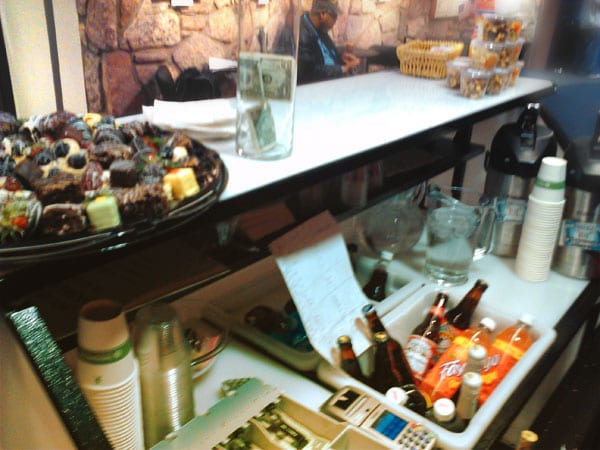
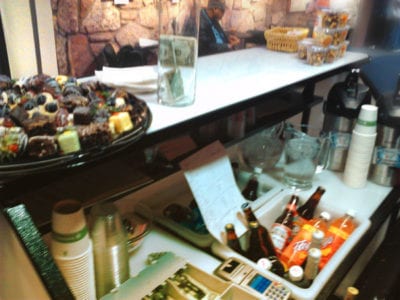
Our Standard Portable Bar, fully stocked and ready to roll!
Do you ever find yourself second guessing whether you’ve set everything up properly before an event? I’m constantly second guessing myself just walking out of my apartment in the morning. This morning I got half way to work before I realized I left my laptop at home! Short of my own noggin, there’s not much else more useful for actually getting work done!
Events and parties are infinitely more difficult to plan than my stroll to work. So it’s now surprising almost everyone I know that works in events uses checklists like crazy.
Whether you’re a caterer, event planner, or mobile bartender, you’ve had the experience of trying to decide how to handle bar service at an event. Should I use a full bar? Or just wine and beer? Wait, what about a specialty drink? Cash bar or hosted bar? How much liquor should I buy? Wait. Are we serving liquor?
Yea. There’s a LOT of questions you need to sort out when you’re figuring out how to set-up a bar for a party or other special event.
We’ve tried to make a little bit simpler for you with a step-by-step process for how to handle it.
Step 1: Deciding on Bar Service
The very first thing you’ll be asking about when deciding how to set-up a bar for your next part is is “what kind of bar service?” There’s essentially two basic options that most event or party bars fall into…
Standard Wine and Beer Bar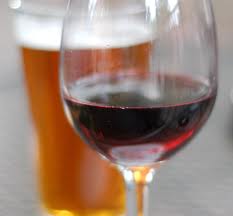
Probably the most common option is a wine and beer only bar. By not having liquor, it’s typically much more affordable if the host is picking up the tab, and from the perspective of the bar, it’s a lot easier to stock since there aren’t so many choices.
The standard wine and beer bar will need at least three popular types of beer (keg beer can be a fun option, although it doesn’t suit all occasions), a dry white wine, a semi-sweet, a full-bodied red and some sparkling wine. I’ll go into detail below and mixers are listed separately, under the section on calculating, but remember that designated drivers and non-drinkers will need a generous selection of non-alcoholic choices.
Full Bar – Wine, Beer and Spirits
When budget isn’t a problem, the full bar – wine, beer and spirits – covers all tastes. This is likely appropriate for events like corporate parties and galas where it makes a real difference to the class of the event to have a wide offering.
A simpler version of this, often used at weddings, is the wine, beer, and speciality drink bar – a themed cocktail, for example –
which has serious advantages for the host – it is easier to buy stock, simpler for bar staff, and if the
host is picking up the whole tab, having a single, or very limited, choice of spirits is a lot cheaper than
a full bar.
Choose the bar type that works best for your guest list and fits into the agreed upon budget.
Step 2: Bar Pricing
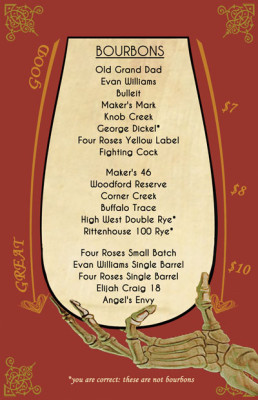 Everyone knows – guests as well as anyone – that liquor costs a lot of money and at some parties a cash bar is becoming the standard. Many wedding receptions, for instance, have a cash bar.
Everyone knows – guests as well as anyone – that liquor costs a lot of money and at some parties a cash bar is becoming the standard. Many wedding receptions, for instance, have a cash bar.
The main differences are that guests order more drinks at a hosted bar (also known as a banquet bar), will try more variety, and won’t hunt down a lost drink, just replace it. Parties with host bars are happy parties, but can be very expensive for the host. One advantage – the range of drinks can be more limited since guests aren’t going to be too picky if they aren’t the ones picking up the tab. Have plenty of stock – demand will be high.
Cash bars should be well stocked. Guests will paying and so are going to expect a full range along with good prices and good service.
There’s also the option to do some combination of the two. This can include offering wine and beer as part of a hosted bar and liquor on a cash basis or using a time limit before switching from a hosted to cash bar. I won’t delve too much into the different combination bar options as they were covered in detail here.
As a general rule, the two main criteria to look at are budget and the type of event. If the budget won’t allow for a hosted bar, the decision becomes a little easier. If it does, this post on event bar pricing and options should help you clarify exactly how to set it up.
Step 3: Calculating what people drink
Trying to figure out how much and what people are going to drink is perhaps the trickiest part of setting up a bar for a party. With so many options available and so many factors that influence how much and what your guests will be drinking, it can get tricky.
This particular estimate assumes that the party is on a Friday evening in warm weather, the bar is fully hosted, there are bar snacks (not a meal) and that the fifty guests are mainly thirty-somethings and live locally. That gives us a generalized starting point to work from and is probably a reasonable assumption for what events commonly look like.
Expect your guests to want three drinks each in the first two hours, and an additional drink per hour after that.
This is the generally accepted “best practice,” though your personal experience with similar parties will always be a better indicator.
Wine and Beer Bar
When you a wine and beer bar, allow up to 3 beers, 2 mixers and 2 glasses of wine per head.
For a party of 50 guests, that translates to between 12 and 13 dozen beers, 9 dozen mixers and 20 bottles of wine. You can add two bottles of cordial (orange and lime are generally the most popular), a bottle of bitters, and some fruit juice options to diversify the choices without adding too much stock.
Which beers? 6-7 dozen of the most popular brand, 3-4 dozen of the second most popular, and the last 2 to 3 dozen would be a mixture of light alcohol options, an imported option, and/or cider.
Which mixers / sodas? Your soft drinks or mixers would be fairly evenly split – 3 dozen cola, 3 dozen lemonade or ginger ale, 2 dozen club sodas (for spritzers and the cordials) and 1 dozen fizzy fruit-flavoured options.
 Which wines? If the weather is colder, people won’t drink quite as much – allow 2 beers instead of 3 (9 dozen) and buy more reds for the wine. Otherwise your wine could be 6 bottles of dry white, 6 bottles of a fruitier white, 4 bottles of sparkling wine and 4 bottles of a middle-of-the-road respectable red.
Which wines? If the weather is colder, people won’t drink quite as much – allow 2 beers instead of 3 (9 dozen) and buy more reds for the wine. Otherwise your wine could be 6 bottles of dry white, 6 bottles of a fruitier white, 4 bottles of sparkling wine and 4 bottles of a middle-of-the-road respectable red.
A celebration with lots of toasts, or a lunchtime event, would need more sparkling wine or champagne and less red. Cocktails such as Bucks Fizz, Mimosa and Kir Royale are fun for a wine and beer bar.
If you are having food and want some guidance on the wine, this chart from winefolly.com is a nice, quick reference.
Full Bar
If you’re offering a full bar, the calculation becomes 2 cocktails, 2 beers, 2 mixers and a glass of wine. You have to buy a reasonable range of spirits – unless you went the recommended route of one signature drink.
You must get a good idea from the host which spirits to stock – no good bringing 4 bottles of vodka for a whisky crowd, or running out of vermouth after two hours. Wherever possible avoid a range of shots or shooters at a full bar, because they’re expensive for the host and can throw planning completely out the window.
If there’s a spontaneous and unexpected tequila run, when you expected vodka shots – problem. An open bar with top-shelf liquor is extremely costly. A more popular alternative is to limit the options to a specialty drink, especially if it can be themed to the event.
For a general full bar, you should look at buying 6 x 750ml bottles for 50 guests – that will mix up 100 cocktails. If you have a speciality drink, or know what the guests like best, excellent. If not, a fairly safe list is:
- 2 x vodka,
- 1 x gin (make it 2 in summer for gin and tonics),
- 1 x whisky (1 x Scotch and 1 x Bourbon in winter),
- 1 x rum (light rather than dark) and
- 1 x tequila or similar for shots (straight) or shooters (mixed)
Adjust the list to the guests. A martini crowd would need more gin than vodka, and a bottle of vermouth.
The mixers won’t change much from the wine and beer bar, unless you need to include more or extra
stock for a cocktail mix. Buck’s Fizz will need lots of fresh orange juice, for example, while a Mimosa
is heavier on champagne than on orange juice. Kir Royale needs crème de cassis.
A Word on Buying Alcohol
If you go through a wholesaler, you may not be able to return leftover stock so the price advantage is
lost. However, if you can store the alcohol and aren’t worried about cash-flow issues (wouldn’t it be nice if that was ever actually the case…), wholesalers are a good option.
If you go through a liquor store, the higher price is usually largely offset by being able to return sealed
unused stock, professional help with deciding your quantities, and a glasses service.
Considerations
Remember that mid-week, mid-day, mid-winter, mid-life and long drives for the departing guests
would all be factors that affect how to set up a bar for a party! Older guests tend more towards spirits
and white wine. Younger groups will be heavier on beer and cocktails. Everyone drinks less when
there’s a meal provided.
A full list of potential considerations is available in the alcohol section of our bar catering guide.
Garnishes
Lemons (with a good knife and a chopping board) are basic. Salt and limes, if you bought tequila.
Other generally useful garnishes include
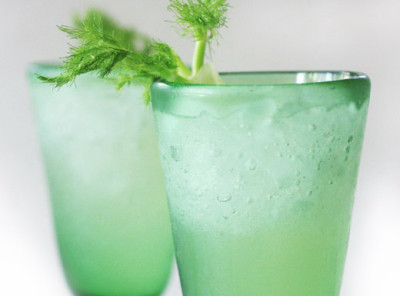
Almond Cocktail garnished with fennel
- limes
- olives
- cocktail onions
- maraschino cherries
You can dress up drinks with herbs, like a feathery frond of fennel.
If you’re offering cocktails, check the recipe for each and make sure you stock the relevant garnishes. If you need sugar or salt for the rim of a glass, don’t forget to supply a container large enough for the glass’s rim.
Prep Garnishes in Advance
Lemons, limes, pineapple, and cucumber can be pre-sliced, arranged on a serving plate, wrapped in cling-film and kept refrigerated until needed.
Ice isn’t really a garnish but whether it is crushed, cubed, bagged or creating a handy cooler, you will need a great deal of it! If you have no other refrigeration, allow up to a pound of ice per guest to keep your stock chilled – nobody wants warm beer or Scotch with no rocks.
Staff
Whatever kind of party it is, including totally private ones, it is always a good idea to have at least one
professional bartender who will know how to set up a bar for a party (ideally, one bartender / helper
per 50 guests) and book them to come early enough to set up. It is also a good idea to have a couple
of helpers for busy times. Unless you have a limitless supply of glasses, the helpers will also have to
collect and wash glasses constantly, haul away empties, and top up snacks.
Equipment
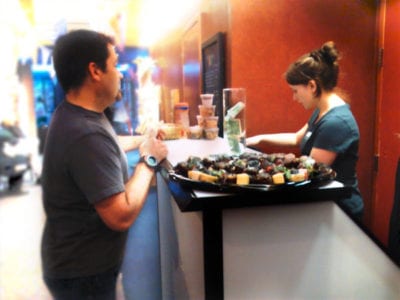
A purpose-built bar, a portable bar designed for the purpose – make sure, if you use a table, that it is sturdy enough to not collapse and smash all your bottles and glasses when someone pushes it accidentally! Because they will!
Chillers : In order of preference, a chest fridge, or a portable back bar, or a zinc bath, to keep backup supplies chilled and on hand. Single cans will chill faster in an ice-bath which has salt added, and the ice will last longer. Remember that once a six-pack is opened or damaged by salt it can’t be taken back, so any back-up chiller large enough to hold six-packs is saving the host money.
Bar equipment
The Basics
- Bottle openers – one for every assistant, and a couple extra won’t hurt, especially if your bar
- staff need to be able to draw corks, flip off bottle tops and, if you don’t have cans with pull tabs, puncture cans.
- Small sharp paring knife and cutting board.
- Ice bucket(s) and tongs.
- Tot measures / jiggers
- Towels (several) and aprons for bar staff
- Trash can(s) and plenty of liners
For Cocktails
- Tall cocktail spoon and swizzle sticks
- Cocktail shaker with strainer
- Vegetable peeler for making twists
- Cocktail straws
- Muddler or other specific equipment depending on the cocktails planned
- Pitchers for cocktails that can be pre-mixed
- Ice crusher, or a supply of crushed ice
Glassware
Assume guests will expect a fresh glass every time they come back for a drink. If you haven’t organized a helper to collect and wash glasses all evening, go back to your calculation to order your glasses. For a beer and wine bar, each guest will need 3 beer glasses, 2 wine glasses (one medium-sized all-purpose wineglass is the easiest) and 2 glasses suitable for soft drinks or ciders. A medium-sized all-purpose long glass is the easiest for beer, ciders and non-alcoholic drinks.
If you have champagne or sparkling wine, especially if there will be toasts, allow 1 flute per guest. For
champagne cocktails, go for 2 flutes per guest, and adjust your long glass order.
For a full bar, including general cocktails, allow for 2 old-fashioned glasses, 1 martini glass, I highball,
2 beer glasses, 1 shot glass and 2 wine glasses.
If you have a bar back and can handle doing dishes mid-event, you can reduce all these numbers significantly. Still, it’s best to overestimate in regards to glassware as running out of glasses will put a major dent in the perception of the bar.